Greg Mitchell's Blog, page 2
August 20, 2016
One Hooker to Remember
The late great John Lee Hooker with the astounding "I Cover the Waterfront," with a little help from Van the Man and, below that, his much earlier version. John Lee also did greatest version of "Gloria," if you were wondering. And then there was "Boom Boom."
Published on August 20, 2016 17:19
I Read It Through the Great Vine
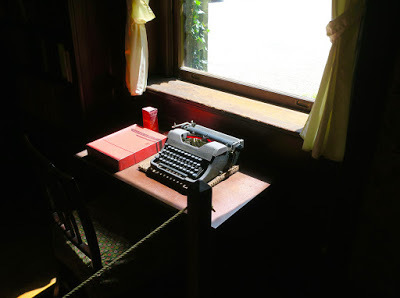 Perhaps any other authors, or book editor, out there can comment on this.
Perhaps any other authors, or book editor, out there can comment on this.Since my last book was published, Amazon has introduced something called "Vine Voices." I'm not sure exactly what this is but it seems to be that they send bound unrevised galleys (not final books) to a select group of longtime reader/reviewers who are then allowed, perhaps encouraged, to post reviews. In fact, they are the only ones allowed to do so before pub date so obviously they have a good of potential influence. My upcoming book is doing very well with them (based on first 9 reviews) but I have no idea how they are picked to get each book--and there are only so many bound galleys in the universe.
Do Vine reviewers request specific books? Does Amazon carefully send them to people based on their past reviews? Is it possible some of them actually have little interest in a book's subject or genre but like getting free books and/or posting reviews and gaining stature in that community? If they give a negative reviews does it hurt their chances of getting more advance copies? See link for what they look and read like with my book and thanks for any comments. At one of my photos from Naumkeag estate near Lenox, Mass., yesterday.
Published on August 20, 2016 07:04
August 17, 2016
Cold War Martyr
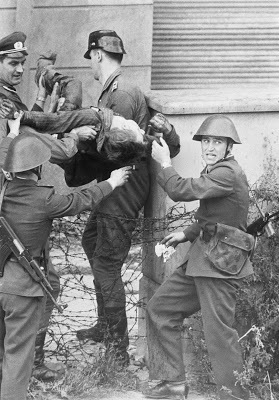 Fifty-four years ago today, almost exactly one year after the emergence of the Berlin Wall, an 18-year-old East German youth named Peter Fechter attempted, with a friend, to escape to the West in broad daylight not far from Checkpoint Charlie. The friend made it over the barrier but Fechter was shot by East German guards and collapsed at its base.
Fifty-four years ago today, almost exactly one year after the emergence of the Berlin Wall, an 18-year-old East German youth named Peter Fechter attempted, with a friend, to escape to the West in broad daylight not far from Checkpoint Charlie. The friend made it over the barrier but Fechter was shot by East German guards and collapsed at its base. Despite his cries for help, no one came to his assistance--not the guards who shot him, nor the West German police and American soldiers on the other side of the Wall. A frantic call was placed to the White House. Crowds gathered on both sides and urged action, to no avail. Finally, after about fifty minutes, under a cloud of tear gas, the guards retrieved the limp body of the boy and carried him to a car--not even an ambulance--for transfer to a hospital.
Two hours later, an East German in a high apartment held a sign to a window to inform the large, angry crowd now gathering in the West: "He is dead."
The murder of Fechter drew international attention. The worst riots in West Berlin since the division of the city then broke out and continued for four days. Many of them were, shockingly, anti-American in character. Fechter seemed to symbolize the entire tragedy of Berlin, the helplessness felt in both East and West, the inability of the Americans to help those trapped in the East. A photo of him being carried away for four guards, taken by Wolfgang Bera, made the front pages of newspapers around the globe and quickly became iconic. He would remain perhaps the martyr of the Cold War, until and beyond the all of the Wall in 1989.
My upcoming book The Tunnels (see cover at upper right on this blog) is dedicated to Peter Fechter and it tells much more of this story.
Published on August 17, 2016 04:50
August 16, 2016
When First Journo Reached Nagasaki--His Story Disappeared for Decades
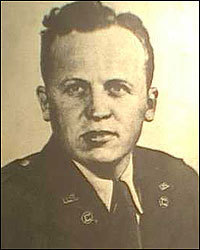 A few days back, I covered the controversial case of Wilfred Burchett, the first reporter to reach A-bombed Hiroshima. See my full story here on George Weller, a well-known correspondent for a Chicago daily, who was the first outside journalist to reach Nagasaki after the atomic bombing. It's an incredible tale, all the more so for me, since I've been haunted about Nagasaki ever since visiting it for a few days in 1984. As I've written elsewhere: If there is very questionable defense for destroying 140,000 civilian lives in Hiroshima, there is no defense whatsoever for the attack on Nagasaki.
A few days back, I covered the controversial case of Wilfred Burchett, the first reporter to reach A-bombed Hiroshima. See my full story here on George Weller, a well-known correspondent for a Chicago daily, who was the first outside journalist to reach Nagasaki after the atomic bombing. It's an incredible tale, all the more so for me, since I've been haunted about Nagasaki ever since visiting it for a few days in 1984. As I've written elsewhere: If there is very questionable defense for destroying 140,000 civilian lives in Hiroshima, there is no defense whatsoever for the attack on Nagasaki.In any case, after Weller bravely reached the city, he foolishly filed his dispatches via Gen. MacArthur's office in Tokyo--from where they never emerged. Ever. They remained hidden until Weller's son, who I have interviewed, found the carbons in an old trunk about then years ago. See my book here for the whole story, the U.S. occupation of the city (where our troops were afflicted), my own visit to Nagasaki, and for more on the decade-long "coverup" of many other elements of the atomic bombing of Japan, including U.S. film footage.
Published on August 16, 2016 04:30
August 6, 2016
71 Years Ago: Truman Began the Story of Hiroshima With a Lie
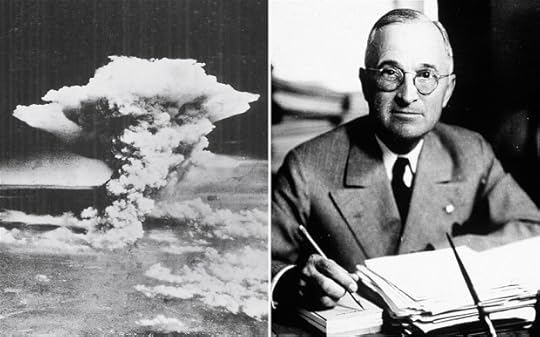 I have posted or linked to a number of my pieces related to the atomic bombings here at this blog over the past two weeks (having covered it for three decades and written two books about it). For now I will direct you to one particular piece on how President Truman's announcement of the bombing of Hiroshima, 71 years ago today, launched the nuclear age with several lies, including describing the large city, filled mainly with women and children, as only a "military base." Also: the bomb was merely a much bigger version of conventional explosives, with radiation effects not mentioned. See more here for the fascinating story of how the statement was written and edited.
I have posted or linked to a number of my pieces related to the atomic bombings here at this blog over the past two weeks (having covered it for three decades and written two books about it). For now I will direct you to one particular piece on how President Truman's announcement of the bombing of Hiroshima, 71 years ago today, launched the nuclear age with several lies, including describing the large city, filled mainly with women and children, as only a "military base." Also: the bomb was merely a much bigger version of conventional explosives, with radiation effects not mentioned. See more here for the fascinating story of how the statement was written and edited.For a long list of pieces I wrote about the atomic bombings for Huff Post, go here.
Published on August 06, 2016 06:43
July 29, 2016
So Long, Marianne
Marianne Ihlen, the lovely muse of Leonard Cohen almost half a century ago, immortalized in his classic "So Long, Marianne," has passed away suddenly, shortly after being diagnosed with leukemia. Their story was really remarkable. From a Leonard poem:
I have lost a telephone
with your smell in it
Did you take the telephone
knowing I'd sniff it immoderately
maybe heat up the plastic
to get all the crumbs of your breath
and if you won't come back
how will you phone to say
you won't come back
so that I could at least argue
I have lost a telephone
with your smell in it
Did you take the telephone
knowing I'd sniff it immoderately
maybe heat up the plastic
to get all the crumbs of your breath
and if you won't come back
how will you phone to say
you won't come back
so that I could at least argue
Published on July 29, 2016 13:28
July 27, 2016
Back Cover "Blurbs" For My Upcoming Book
Just designed by Crown with "advanced praise" blurbs. Thanks to them, the many tunnelers and escapees who sat for interviews, my editors, and my research team (Emely, Stephane, Jeni and Barbara). Pub date: October 18, 2016. More here. <!-- /* Font Definitions */ @font-face {font-family:"Cambria Math"; panose-1:2 4 5 3 5 4 6 3 2 4; mso-font-charset:0; mso-generic-font-family:auto; mso-font-pitch:variable; mso-font-signature:3 0 0 0 1 0;} @font-face {font-family:Calibri; panose-1:2 15 5 2 2 2 4 3 2 4; mso-font-charset:0; mso-generic-font-family:auto; mso-font-pitch:variable; mso-font-signature:3 0 0 0 1 0;} /* Style Definitions */ p.MsoNormal, li.MsoNormal, div.MsoNormal {mso-style-unhide:no; mso-style-qformat:yes; mso-style-parent:""; margin-top:0in; margin-right:0in; margin-bottom:10.0pt; margin-left:0in; line-height:115%; mso-pagination:widow-orphan; font-size:11.0pt; font-family:Calibri; mso-ascii-font-family:Calibri; mso-ascii-theme-font:minor-latin; mso-fareast-font-family:Calibri; mso-fareast-theme-font:minor-latin; mso-hansi-font-family:Calibri; mso-hansi-theme-font:minor-latin; mso-bidi-font-family:"Times New Roman"; mso-bidi-theme-font:minor-bidi;} .MsoChpDefault {mso-style-type:export-only; mso-default-props:yes; font-size:11.0pt; mso-ansi-font-size:11.0pt; mso-bidi-font-size:11.0pt; font-family:Calibri; mso-ascii-font-family:Calibri; mso-ascii-theme-font:minor-latin; mso-fareast-font-family:Calibri; mso-fareast-theme-font:minor-latin; mso-hansi-font-family:Calibri; mso-hansi-theme-font:minor-latin; mso-bidi-font-family:"Times New Roman"; mso-bidi-theme-font:minor-bidi;} .MsoPapDefault {mso-style-type:export-only; margin-bottom:10.0pt; line-height:115%;} @page WordSection1 {size:8.5in 11.0in; margin:1.0in 1.0in 1.0in 1.0in; mso-header-margin:.5in; mso-footer-margin:.5in; mso-paper-source:0;} div.WordSection1 {page:WordSection1;} </style><br /><br /><div class="MsoNormal" style="line-height: 200%; margin-bottom: .0001pt; margin-bottom: 0in;"><a href="https://1.bp.blogspot.com/-q7QoQLu8Zq..." imageanchor="1" style="clear: left; float: left; margin-bottom: 1em; margin-right: 1em;"><img border="0" height="400" src="https://1.bp.blogspot.com/-q7QoQLu8Zq..." width="324" /></a><span style="font-family: Times,"Times New Roman",serif;"><span style="font-family: "georgia" , "times new roman" , serif;"><span style="font-size: x-large;"><span style="font-family: inherit;"><span style="line-height: 200%;">“<i style="mso-bidi-font-style: normal;">The Tunnels</i> is one of the great untold stories of the Cold War. Brilliantly researched and told with great flair, Greg Mitchell’s non-fiction narrative reads like the best spy thriller, something Le Carre might have imagined. Easily the best book I’ve read all year.” </span><span style="line-height: 200%;">—Alex Kershaw, author of <i style="mso-bidi-font-style: normal;">Avenue of Spies</i></span></span></span></span></span></div><div class="MsoNormal" style="line-height: 200%; margin-bottom: 0in;"><span style="font-family: Times,"Times New Roman",serif;"><span style="font-family: "georgia" , "times new roman" , serif;"><span style="font-size: x-large;"><span style="font-family: inherit;"><span style="font-size: medium;"><br /></span></span></span></span></span></div><div class="MsoNormal" style="line-height: 200%; margin-bottom: 0in;"><span style="font-family: Times,"Times New Roman",serif;"><span style="font-family: "georgia" , "times new roman" , serif;"><span style="font-size: x-large;"><span style="font-family: inherit;"><span style="line-height: 200%;">“Greg Mitchell is the best kind of historian, a true storyteller. <i style="mso-bidi-font-style: normal;">The Tunnels</i> is a gripping tale about heroic individuals defying an authoritarian state at a critical moment in the Cold War. A brilliantly told thriller—but all true.” </span><span style="line-height: 200%;">—</span><span style="line-height: 200%;">Kai Bird, author of <i style="mso-bidi-font-style: normal;">The Good Spy</i> </span></span></span></span></span></div><div class="MsoNormal" style="line-height: 200%; margin-bottom: 0in;"><span style="font-family: Times,"Times New Roman",serif;"><span style="font-family: "georgia" , "times new roman" , serif;"><span style="font-size: x-large;"><span style="font-family: inherit;"><span style="font-size: medium;"><br /></span></span></span></span></span></div><div class="MsoNormal" style="line-height: 200%; margin-bottom: 0in;"><span style="font-family: Times,"Times New Roman",serif;"><span style="font-family: "georgia" , "times new roman" , serif;"><span style="font-size: x-large;"><span style="font-family: inherit;"><span style="line-height: 200%;">“When you have read the last page of Greg Mitchell’s <i style="mso-bidi-font-style: normal;">The Tunnels</i> you will close the book—but not until then.” —Alan Furst, author of <i>A Hero of France </i><span style="mso-bidi-font-style: italic;">and </span><i style="mso-bidi-font-style: normal;">Night Soldiers</i> </span></span></span></span></span></div><div class="MsoNormal" style="line-height: 200%; margin-bottom: 0in;"><span style="font-family: Times,"Times New Roman",serif;"><span style="font-family: "georgia" , "times new roman" , serif;"><span style="font-size: x-large;"><span style="font-family: inherit;"><span style="font-size: medium;"><br /></span></span></span></span></span></div><div class="MsoNormal" style="line-height: 200%; margin-bottom: 0in;"><span style="font-family: Times,"Times New Roman",serif;"><span style="font-family: "georgia" , "times new roman" , serif;"><span style="font-size: x-large;"><span style="font-family: inherit;"><span style="line-height: 200%;">"Greg Mitchell has written a riveting story about one of the most powerful documentaries ever broadcast on television – NBC’s <i>The Tunnel. </i>Those of us who saw it that December night in 1962 have never forgotten the experience. </span></span></span></span><span style="font-family: "georgia" , "times new roman" , serif;"><span style="font-size: x-large;"><span style="font-family: inherit;"><span style="line-height: 200%;"><span style="color: black;">Now Mitchell, an exemplary journalist, goes beyond what the cameras saw, deep into the political dynamics of Cold War Berlin.</span> John Le Carre couldn’t have done it better."<br /> -- Bill Moyers </span></span></span></span></span></div><div class="MsoNormal" style="line-height: 200%; margin-bottom: 0in;"><span style="font-family: Times,"Times New Roman",serif;"><span style="font-family: "georgia" , "times new roman" , serif;"><span style="font-size: x-large;"><span style="font-family: inherit;"><span style="font-size: medium;"><br /></span></span></span></span></span></div><div class="MsoNormal" style="line-height: 200%; margin-bottom: 0in;"><span style="font-family: Times,"Times New Roman",serif;"><span style="font-family: "georgia" , "times new roman" , serif;"><span style="font-size: x-large;"><span style="font-family: inherit;"><span style="line-height: 200%;"><span style="mso-spacerun: yes;"> </span>“<i style="mso-bidi-font-style: normal;">The Tunnels</i> uncovers an unexplored underworld of Cold War intrigue. As nuclear tensions grip Berlin, a whole realm of heroes and villains, of plot and counterplot, unfolds beneath the surface of the city. True historical drama.” <span style="mso-spacerun: yes;"> </span>—Ron Rosenbaum, author of <i style="mso-bidi-font-style: normal;">Explaining Hitler</i>and <i style="mso-bidi-font-style: normal;">The Shakespeare Wars</i></span></span></span></span></span></div><div class="MsoNormal" style="line-height: 200%; margin-bottom: 0in;"><span style="font-family: Times,"Times New Roman",serif;"><span style="font-family: "georgia" , "times new roman" , serif;"><span style="font-size: x-large;"><span style="font-family: inherit;"><span style="font-size: medium;"><br /></span></span></span></span></span></div><div class="MsoNormal" style="line-height: 200%; margin-bottom: 0in;"><span style="font-family: Times,"Times New Roman",serif;"><span style="font-family: "georgia" , "times new roman" , serif;"><span style="font-size: x-large;"><span style="font-family: inherit;"><span style="line-height: 200%;">“A compelling look at a wrenching chapter of the Cold War that chronicles the desperate flights for freedom beneath the streets of post-war Berlin and the costs that politics extracted in lives.”</span></span></span></span></span></div><div class="MsoNormal" style="line-height: 200%; margin-bottom: 0in;"><span style="font-family: Times,"Times New Roman",serif;"><span style="font-family: "georgia" , "times new roman" , serif;"><span style="font-size: x-large;"><span style="font-family: inherit;"><span style="line-height: 200%;">—Barry Meier, author of <i style="mso-bidi-font-style: normal;">Missing Man</i></span></span></span></span></span></div><span style="font-family: "georgia" , "times new roman" , serif;"><br /></span><span style="font-family: "georgia" , "times new roman" , serif;"><br /></span>
Published on July 27, 2016 18:07
Back Cover of My Upcoming Book
Just created, with "advanced praise" blurbs. Thanks to all of them: Alan Furst, Bill Moyers, Kai Bird, Alex Kershaw, Ron Rosenbaum, Barry Meier. Pub date: October 18, 2016. More here.


Published on July 27, 2016 18:07
July 21, 2016
The Chicago 'Police Riot'
Protests outside this year's GOP convention have drawn little media coverage and one might say they have "fizzled." And no wonder: police and city officials for conventions for decades have learned to force protesters into "security zones" far from the convention halls and provided overwhelmingly numbers of security forces nearby. I guess we can blame it all on...1968, and the infamous bloodbath on the streets of Chicago. I happened to be there at the age of twenty. Here's a piece I wrote not long along ago about how I witnessed that at close hand.
***
Forty-eight years ago my trip to Chicago for the Democratic National Convention would culminate in the crushing of Sen. Eugene McCarthy's anti-Vietnam crusade inside the convention hall and the cracking of peacenik skulls by Mayor Richard Daley's police in the streets. Together, this doomed Hubert Humphrey to defeat in November at the hands of Richard Nixon.
I'd been a political-campaign junkie all my life. At the age of 8, I paraded in front of my boyhood home in Niagara Falls, N.Y., waving an "I Like Ike" sign. In 1968 I got to cover my first presidential campaign when one of Sen. McCarthy's nephews came to town, before the state primary, and I interviewed him for the Niagara Falls Gazette, where I worked as a summer reporter during college. I had been chair of the McCarthy campaign at my college. So much for non-biased reporting!
 My mentor at the Gazette was a young, irreverent City Hall reporter named John Hanchette. He went on to an illustrious career at other papers, and as a Pulitzer Prize-winning national correspondent for Gannett News Service. Hanchette was in Chicago that week to cover party politics as a Gazette reporter and contributor to the Gannett News Service (GNS). I was to hang out with the young McCarthyites and the anti-war protesters. To get to Chicago I took my first ride on a jetliner.
My mentor at the Gazette was a young, irreverent City Hall reporter named John Hanchette. He went on to an illustrious career at other papers, and as a Pulitzer Prize-winning national correspondent for Gannett News Service. Hanchette was in Chicago that week to cover party politics as a Gazette reporter and contributor to the Gannett News Service (GNS). I was to hang out with the young McCarthyites and the anti-war protesters. To get to Chicago I took my first ride on a jetliner.
To make a long story short: On the climactic night of Aug. 28, 1968, Hanchette and I ended up just floors apart in the same building: the Conrad Hilton Hotel in downtown Chicago. I was in McCarthy headquarters and Hanchette was in one of Gannett's makeshift newsrooms. Just after the peace plank to the DNC platform was defeated, TV coverage switched to shocking scenes of young folks getting beaten with nightsticks on the streets of Chicago, but we didn't know where. Then we smelled tear gas and someone the curtains along a wall of windows and we looked out to see police savagely attacking protesters with nightsticks at the intersection directly below.
Soon I headed for the streets. By that time, the peak violence had passed, but cops were still pushing reporters and other innocent bystanders through plate glass windows at the front of the hotel, so the danger was still real. I held back in the lobby, where someone had set off a stink bomb. Some Democrats started returning from the convention hall -- after giving Humphrey the nomination even though McCarthy and Bobby Kennedy won most of the primaries -- as protesters inside the Hilton chanted, "You killed the party! You killed the party!" And: "You killed the country." And, of course, "Dump the Hump!"
Finally, I screwed up my courage and crossed to Grant Park where the angry protest crowd gathered, with troops in jeeps with machine guns pointed at us. And there I stayed all night, as the crowd and chants of "pig" directed at the cops increased. Many in the crowd wore bandages of had fresh blood on their faces. Phil Ochs (later a friend) arrived and sang, along with other notables, including some of the peacenik delegates and a famous writer or two. This was Zuccotti Park but with heavily armed soldiers ready to swoop in, not simply NYC cops. Somehow we survived the night.
When I returned to Niagara Falls that Friday, I wrote a column for that Sunday's paper. I described the eerie feeling of sitting in Grant Park, and thousands around me yelling at the soldiers and the media, "The whole world is watching!" -- and knowing that, for once, it was true.
More than 35 years later, after I had written two books on other infamous political campaigns, I returned to Chicago for a staged performance of a musical based on one of them. As I got out of a cab to make my way to the theater, I had an eerie feeling and, sure enough, looking up the street I noticed Grant Park a block away -- and the very intersection in front of the Hilton where skulls were cracked that night in 1968.
P.S. Norman Mailer's terrific book, Miami and the Siege of Chicago, is still in print.
***
Forty-eight years ago my trip to Chicago for the Democratic National Convention would culminate in the crushing of Sen. Eugene McCarthy's anti-Vietnam crusade inside the convention hall and the cracking of peacenik skulls by Mayor Richard Daley's police in the streets. Together, this doomed Hubert Humphrey to defeat in November at the hands of Richard Nixon.
I'd been a political-campaign junkie all my life. At the age of 8, I paraded in front of my boyhood home in Niagara Falls, N.Y., waving an "I Like Ike" sign. In 1968 I got to cover my first presidential campaign when one of Sen. McCarthy's nephews came to town, before the state primary, and I interviewed him for the Niagara Falls Gazette, where I worked as a summer reporter during college. I had been chair of the McCarthy campaign at my college. So much for non-biased reporting!
 My mentor at the Gazette was a young, irreverent City Hall reporter named John Hanchette. He went on to an illustrious career at other papers, and as a Pulitzer Prize-winning national correspondent for Gannett News Service. Hanchette was in Chicago that week to cover party politics as a Gazette reporter and contributor to the Gannett News Service (GNS). I was to hang out with the young McCarthyites and the anti-war protesters. To get to Chicago I took my first ride on a jetliner.
My mentor at the Gazette was a young, irreverent City Hall reporter named John Hanchette. He went on to an illustrious career at other papers, and as a Pulitzer Prize-winning national correspondent for Gannett News Service. Hanchette was in Chicago that week to cover party politics as a Gazette reporter and contributor to the Gannett News Service (GNS). I was to hang out with the young McCarthyites and the anti-war protesters. To get to Chicago I took my first ride on a jetliner.To make a long story short: On the climactic night of Aug. 28, 1968, Hanchette and I ended up just floors apart in the same building: the Conrad Hilton Hotel in downtown Chicago. I was in McCarthy headquarters and Hanchette was in one of Gannett's makeshift newsrooms. Just after the peace plank to the DNC platform was defeated, TV coverage switched to shocking scenes of young folks getting beaten with nightsticks on the streets of Chicago, but we didn't know where. Then we smelled tear gas and someone the curtains along a wall of windows and we looked out to see police savagely attacking protesters with nightsticks at the intersection directly below.
Soon I headed for the streets. By that time, the peak violence had passed, but cops were still pushing reporters and other innocent bystanders through plate glass windows at the front of the hotel, so the danger was still real. I held back in the lobby, where someone had set off a stink bomb. Some Democrats started returning from the convention hall -- after giving Humphrey the nomination even though McCarthy and Bobby Kennedy won most of the primaries -- as protesters inside the Hilton chanted, "You killed the party! You killed the party!" And: "You killed the country." And, of course, "Dump the Hump!"
Finally, I screwed up my courage and crossed to Grant Park where the angry protest crowd gathered, with troops in jeeps with machine guns pointed at us. And there I stayed all night, as the crowd and chants of "pig" directed at the cops increased. Many in the crowd wore bandages of had fresh blood on their faces. Phil Ochs (later a friend) arrived and sang, along with other notables, including some of the peacenik delegates and a famous writer or two. This was Zuccotti Park but with heavily armed soldiers ready to swoop in, not simply NYC cops. Somehow we survived the night.
When I returned to Niagara Falls that Friday, I wrote a column for that Sunday's paper. I described the eerie feeling of sitting in Grant Park, and thousands around me yelling at the soldiers and the media, "The whole world is watching!" -- and knowing that, for once, it was true.
More than 35 years later, after I had written two books on other infamous political campaigns, I returned to Chicago for a staged performance of a musical based on one of them. As I got out of a cab to make my way to the theater, I had an eerie feeling and, sure enough, looking up the street I noticed Grant Park a block away -- and the very intersection in front of the Hilton where skulls were cracked that night in 1968.
P.S. Norman Mailer's terrific book, Miami and the Siege of Chicago, is still in print.
Published on July 21, 2016 07:00
July 20, 2016
Countdown to Hiroshima: X-Minus-17 Days
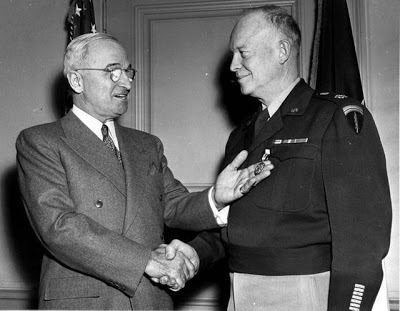 Every year at this time, I trace the final days leading up to the first (and so far only) use of the atomic bomb against cities, Hiroshima and Nagasaki, Japan, in August 1945. As many know, this is a subject that I have studied and written about in hundreds of articles and two books (including the recent Atomic Cover-Up) since the early 1980s with a special emphasis on the aftermath of the bombings, and the government and media suppression in the decades after. Yesterday's entry. What happened on today's date:
Every year at this time, I trace the final days leading up to the first (and so far only) use of the atomic bomb against cities, Hiroshima and Nagasaki, Japan, in August 1945. As many know, this is a subject that I have studied and written about in hundreds of articles and two books (including the recent Atomic Cover-Up) since the early 1980s with a special emphasis on the aftermath of the bombings, and the government and media suppression in the decades after. Yesterday's entry. What happened on today's date: July 20, 1945: Secretary of War met several top U.S. generals in Germany. Gen. Dwight D. Eisenhower would years later in Newsweek write: "Secretary of War Stimson, visiting my headquarters in Germany, informed me that our government was preparing to drop an atomic bomb on Japan. I was one of those who felt that there were a number of cogent reasons to question the wisdom of such an act. …the Secretary, upon giving me the news of the successful bomb test in New Mexico, and of the plan for using it, asked for my reaction, apparently expecting a vigorous assent. During his recitation of the relevant facts, I had been conscious of a feeling of depression and so I voiced to him my grave misgivings, first on the basis of my belief that Japan was already defeated and that dropping the bomb was completely unnecessary, and secondly because I thought that our country should avoid shocking world opinion by the use of a weapon whose employment was, I thought, no longer mandatory as a measure to save American lives.
"It was my belief that Japan was, at that very moment, seeking some way to surrender with a minimum loss of ‘face’. The Secretary was deeply perturbed by my attitude."
Published on July 20, 2016 08:23



